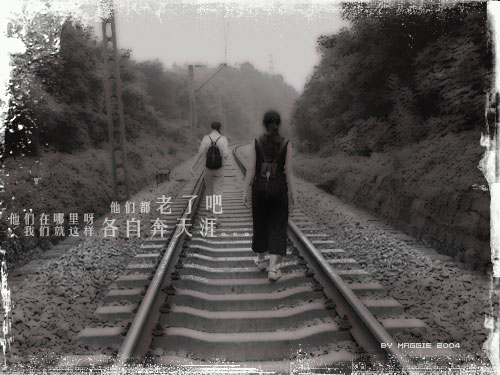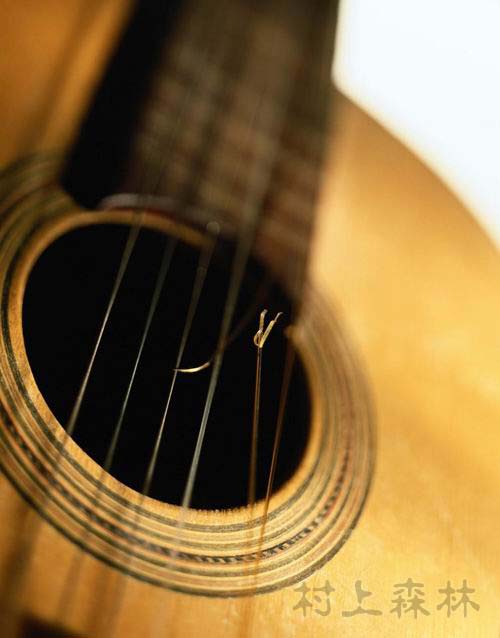The Wind-Up Bird Chronicle
27
Cinnamon's Missing Links
*
Here ended "The Wind-Up Bird Chronicle #8."
I exited the document to the original menu and clicked on "The Wind-
Up Bird
Chronicle #9." I wanted to read the continuation of the story. But
instead of a new
document, I saw this message:
Access denied to "The Wind- Up Bird Chronicle #9" based on
Code R24.
Choose another document.
I chose #10, but with the same results.
Access denied to "The Wind- Up Bird Chronicle #10" based
on Code R24.
Choose another document.
The same thing happened with #11-and with all the other documents,
including #8. I
had no idea what this "Code R24" was, but it was obviously blocking
access to
everything now. At the moment I had opened "The Wind-Up Bird
Chronicle #8," I
probably could have had access to any one of them, but #8 having
been opened and
closed, the doors were locked to all of them now. Maybe this program
did not permit ac-
cess to more than one document at a time.
I sat in front of the computer, wondering what to do next. But there
was nothing I
could do next. This was a precisely articulated world, which had
been conceived in
Cinnamon's mind and which functioned according to his principles. I
did not know the
rules of the game. I gave up trying and shut down the computer.
Without a doubt, "The Wind-Up Bird Chronicle #8" was a story told by
Cinnamon.
He had put sixteen stories into the computer under the title "The
Wind-Up Bird
Chronicle," and it just so happened that I had cho sen and read #8.
Judging from the
length of the one story, sixteen such stories would have made a
fairly thick book if set in
type.
What could "#8" signify? The word "chronicle" in the title probably
meant that the
stories were related in chronological order, #8 following #7, #9
following #8, and so on.
That was a reasonable assumption, if not necessarily true. They
could just as well have
been arranged in a different order. They might even run backward,
from the present to the
past. A bolder hypothesis might make them sixteen different versions
of the same story
told in parallel. In any case, the one I had chosen was a sequel to
the story that
Cinnamon's mother, Nutmeg, had told me about soldiers killing
animals in the Hsin -
ching zoo in August 1945. It was set in the same zoo on the
following day, and again the
central character was Nutmeg's father, Cinnamon's grandfather, the
nameless
veterinarian.
I had no way of telling how much of the story was true. Was every
bit of it
Cinnamon's creation, or were parts of it based on actual events?
Nutmeg had told me that
"absolutely nothing" was known about what happened to her father
after she saw him
last. Which meant that the story could not be entirely true. Still,
it was conceivable that
some of the details were based on historical fact. It was possible
that during such a time
of chaos, a number of cadets from the Manchukuo Army officer
candidate school were
executed and buried in a hole in the Hsin- ching zoo and that the
Japanese officer in
charge of the operation had been executed after the war. Incidents
of desertion and
rebellio n by Manchukuo Army troops were by no means rare at the
time, and although it
was rather strange to have the murdered Chinese cadets dressed in
baseball uniforms, this
could have happened as well. Knowing such facts, Cinnamon might have
combined them
with the image he had of his grandfather and made up ftis own story.
But why, finally, had Cinnamon written such stories? And why
stories? Why not
some other form? And why had he found it necessary to use the word
"chronicle" in the
title? I thought about these things while seated on the fitting room
sofa, turning a colored
design pencil over and over in my hand.
I probably would have had to read all sixteen stories to find the
answers to my
questions, but even after a single reading of #8, I had some idea,
however vague, of what
Cinnamon was looking for in his writing. He was engaged in a serious
search for the
meaning of his own existence. And he was hoping to find it by
looking into the events
that had preceded his birth.
To do that, Cinnamon had to fill in those blank spots in the past
that he could not
reach with his own hands. By using those hands to make a story, he
was trying to supply
the missing links. From the stories he had heard repeatedly from his
mother, he derived
further stories in an attempt to re- create the enigmatic figure of
his grandfather in a new
setting. He inherited from his mother's stories the fundamental
style he used, unaltered,
in his own stories: namely, the assumption that fact may not be
truth, and truth may not
be factual. The question of which parts of a story were factual and
which parts were not
was probably not a very im portant one for Cinnamon. The important
question for
Cinnamon was not what his grandfather did but what his grandfather
might have done.
He learned the answer to this question as soon as he succeeded in
telling the story.
His stories used "wind-up bird" as a key phrase, and they almost cer
tainly brought the
narrative up to the present day in the form of a chronicle (or
perhaps not in the form of a
chronicle). But "wind- up bird" was not a term invented by Cinnamon.
It was a phrase
spoken unconsciously by his mother, Nutmeg, in a story she told me
in the Aoyama
restaurant where we ate together. Nutmeg almost certainly did not
know at that time that I
had been given the name "Mr. Wind- Up Bird." Which meant that I was
connected with
their story through some chance conjunction.
I could not be certain of this, however. Nutmeg might possibly have
known that I was
called "wind- up bird." The words might have affected her story (or,
rather, their story),
might have eaten their way into it on an unconscious level. This
story jointly possessed
by mother and son might not exist in a single fixed form but could
go on taking in
changes and growing as a story does in oral transmission.
Whether by chance conjunction or not, the "wind-up bird" was a
powerful presence in
Cinnamon's story. The cry of this bird was audible only to certain
special people, who
were guided by it toward inescapable ruin. The will of human beings
meant nothing,
then, as the veterinarian always seemed to feel. People were no more
than dolls set on
tabletops, the springs in their backs wound up tight, dolls set to
move in ways they could
not choose, moving in directions they could not choose. Nearly all
within range of the
wind - up bird's cry were ruined, lost. Most of them died, plunging
over the edge of the
table.
Cinnamon had almost certainly monitored my conversation with Kumiko.
He
probably knew everything that went on in this computer. He had
probably waited until I
had finished before presenting me with the story of "The Wind- Up
Bird Chronicle." This
had clearly not happened by chance or a sudden whim. Cinnamon had
run the machine
with a definite purpose in mind and shown me one story. He had also
made sure I knew
that there might possibly exist a whole, huge cluster of stories.
I lay down on the sofa and looked at the ceiling of the fitting room
in the half- dark.
The night was deep and heavy, the area almost painfully quiet. The
white ceiling looked
like a thick white cap of ice that had been set on top of the room.
Cinnamon's grandfather, the nameless veterinarian, and I had a num
ber of unusual
things in common-a mark on the face, a baseball bat, the cry of the
wind -up bird. And
then there was the lieutenant who appeared in Cinnamon's story: he
reminded me of
Lieutenant Mamiya. Lieutenant Mamiya had also been assigned to
Kwantung Army
Headquarters in Hsin-ching at that time. The real Lieutenant Mamiya,
however, was not a
paymaster officer but belonged to the mapmaking corps, and after the
war he was not
hanged (fate had denied him death at all) but rather returned to
Japan, having lost his left
hand in battle. Still, I could not shake off the impression that the
officer who had directed
the executions of the Chinese cadets had really been Lieutenant
Mamiya. At least if it
had been Lieutenant Mamiya, that would not have been the least bit
strange.
Then there was the problem of the baseball bats. Cinnamon knew that
I kept a bat in
the bottom of the well. Which meant that the image of the bat could
have "eaten its way"
into his story the same way the words "wind -up bird chronicle"
could have. Even if this
was true, however, there was still something about the bat that
could not be explained so
simply: the man with the guitar case who attacked me with the bat in
the entryway of the
abandoned apartment house. This was the man who had made a show of
burning the palm
of his hand in a candle flame in a bar in Sapporo and who later hit
me with the bat, only
to have me beat him with it. He was the one who had surrendered the
bat to me.
And finally, why did I have burned into my face a mark the same
color and shape as
that of Cinnamon's grandfather? Was this, too, something that came
up in their story as a
result of my presence having "eaten" its way into it? Did the actual
veterinarian not have
a mark on his face? Nut meg certainly had no need to make up such a
thing in describing
her fa ther to me. The very thing that had led her to "find" me on
the streets of Shinjuku
was this mark that we possessed in common. Everything was
intertwined, with the
complexity of a three-dimensional puzzle- a puzzle in which truth
was not necessarily fact
and fact not necessarily truth.
I stood up from the sofa and went to Cinnamon's small office once
again. There I sat
at the desk, elbows resting on the table, and stared at the computer
screen. Cinnamon was
probably inside there. In there, his silent words lived and breathed
as stories. They could
think and seek and grow and give off heat. But the screen before me
remained as deep in
death as the moon, hiding Cinnamon's words in a labyrinthine forest.
Neither the
monitor's screen nor Cinnamon himself, behind it, tried to tell me
any more than I had
already been told.

